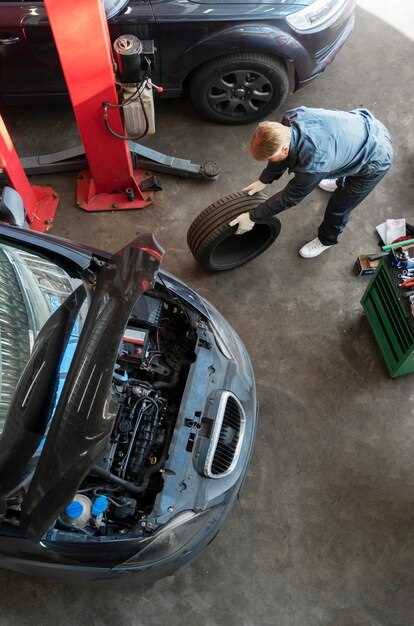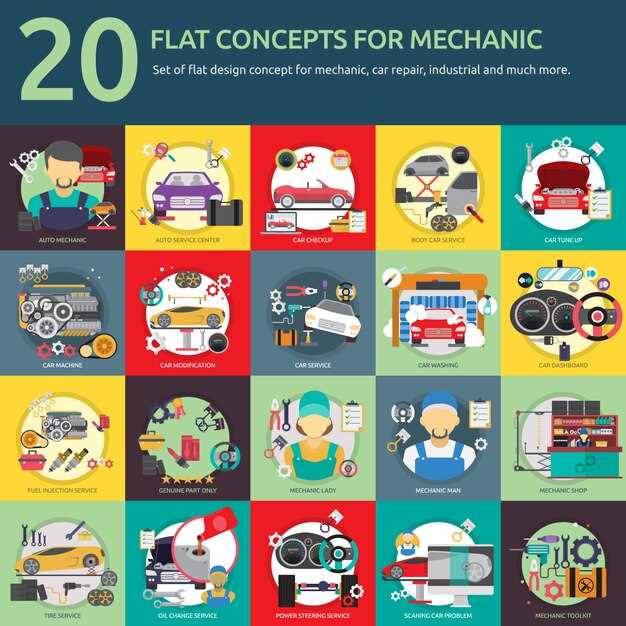
When to repair vs replace auto parts

When faced with the challenge of maintaining a vehicle, one of the most critical decisions a car owner must make is whether to repair or replace malfunctioning auto parts. This decision can significantly impact both the vehicle’s performance and the owner’s budget. Understanding the key factors involved in this choice is essential for making an informed decision that ultimately ensures the longevity and reliability of the vehicle.
Several aspects come into play when contemplating whether to repair a part or opt for replacement. The extent of damage, the cost of repairs versus new parts, and the potential longevity of either option are paramount in guiding the decision process. Moreover, considering the safety implications and the manufacturer’s recommendations can provide valuable insight into the best course of action.
In this article, we will delve into these key factors, offering a comprehensive analysis of when it might be more beneficial to repair an auto part instead of replacing it entirely. By equipping yourself with the right information, you can make a more confident decision that aligns with your vehicle’s needs and your personal circumstances.
Evaluating Cost Implications of Repair vs. Replacement
When faced with malfunctioning auto parts, car owners often grapple with the decision to either repair or replace the component. Each option carries its own cost implications, which must be carefully evaluated to make an informed choice.
Repairing an auto part typically involves lower immediate costs. It may seem attractive due to the reduced expense compared to a full replacement. However, it is crucial to consider the long-term effects of this choice. Frequent repairs may accumulate costs over time, potentially outweighing the initial savings. In addition, the reliability of the repaired part might not match that of a new one, potentially leading to recurring issues and further costs.
In contrast, opting for a replacement often involves a higher upfront expenditure. This option provides the advantage of a new component with a warranty, offering peace of mind regarding longevity and performance. A new part can enhance overall vehicle efficiency and may even contribute to savings in maintenance costs in the long run. However, it’s essential to evaluate whether the investment in a replacement aligns with the vehicle’s overall value and expected lifespan.
When assessing the costs, car owners should also consider the total cost of ownership, which includes insurance, maintenance, and potential downtime. A thorough analysis of these factors can help determine whether the more expensive option of replacement truly presents a better financial decision over time compared to the seemingly economical route of repair.
Ultimately, the choice between repair and replacement involves weighing immediate financial implications against long-term benefits and reliability. Making a comprehensive evaluation can lead to a decision that optimally aligns with both budget and vehicle performance needs.
Assessing the Impact on Vehicle Performance and Safety

When considering whether to repair or replace auto parts, it is crucial to assess the potential impact on vehicle performance and safety. The decision should not be taken lightly, as it can have significant implications for both the functionality of the vehicle and the well-being of its occupants.
Replacement parts are engineered to meet specific performance standards. High-quality replacement components can restore or even enhance the original performance of the vehicle. Conversely, repairing worn or damaged parts may offer a quick fix but might not always ensure optimal performance. It is essential to evaluate whether the repair will restore the part to its original effectiveness or if replacement is the better option for maintaining a reliable driving experience.
Safety is another major factor in the decision-making process. Compromised parts can lead to safety hazards, increasing the risk of accidents. Components such as brakes, steering systems, and suspension play critical roles in vehicle stability and control. In cases where safety is at stake, opting for replacement over repair is often the more prudent choice. Ensuring that all parts perform as intended is vital for the overall safety of the vehicle.
Additionally, considering the longevity of repairs versus replacements can influence the decision. Repairs may provide a temporary solution, but if a part is nearing the end of its lifespan, investing in a replacement can be more cost-effective in the long run. This approach not only enhances performance but also contributes to sustained safety over time.
Ultimately, assessing the impact on vehicle performance and safety involves a careful analysis of the cost, functionality, and safety implications of both repair and replacement options. Prioritizing these factors will lead to informed decisions that ensure the vehicle remains reliable and safe on the road.
Understanding Long-term Maintenance and Reliability Concerns

When faced with the decision to repair or replace auto parts, long-term maintenance and reliability concerns are critical factors to consider. Repairing a part may offer a cost-effective short-term solution, but it’s essential to evaluate whether this choice aligns with future performance and reliability expectations.
One of the main considerations in repair versus replacement is the longevity of the existing component. A repaired part may not restore the same level of function as a new one, potentially leading to ongoing repair needs. This can result in increased maintenance costs over time, counterbalancing initial savings. Conversely, replacing a part typically offers a fresh start, ensuring that the component functions at optimal levels without the risk of previous wear compromising its reliability.
Additionally, the history of the specific part plays a crucial role in the decision-making process. Parts that are known for recurring failures might be better off replaced rather than repaired. Understanding the typical lifespan and reliability data can inform whether investing in a repair will yield satisfactory long-term results or if replacement is more prudent.
Another important aspect is the availability of parts. If a specific component is rare or obsolete, finding reliable replacement options may prove challenging. However, if repairs can be made with widely available materials and parts, this may sway the decision toward repairing, assuming reliability is maintained.
Ultimately, the decision to repair or replace auto parts should be guided by a comprehensive understanding of long-term implications on maintenance and reliability. A thorough assessment of factors, including the part’s condition, historical performance, and future needs, will help ensure a choice that supports not only immediate needs but also long-term vehicle reliability.